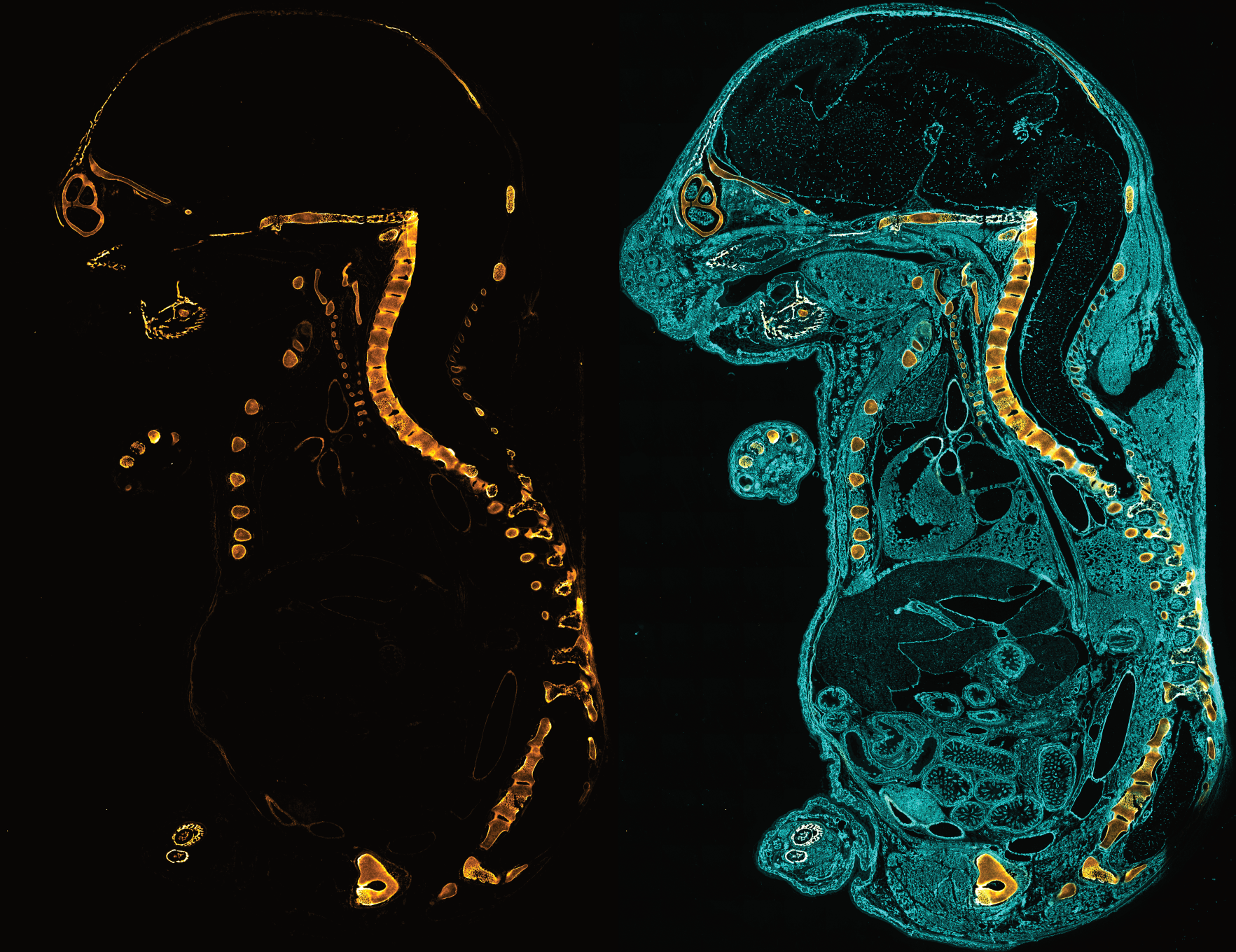Molecular Imaging of Collagen Destruction of the Spine
A great new paper from Dr. Yang Li’s group published in ACS NAno utilized in vivo CHPs with a Cy5 fluorescent tag to evaluate collagen destruction in the spine. This in-depth work identified collagen damage in three different animal models, compared the in vivo CHP imaging to micro-CT, histopathology, and performed tissue clearing methods to image using light-sheet fluorescence microscopy to truly identify the anatomic localization of CHP binding in the spine in 3D. Additionally, they compared common fluorescent probes used for bone destruction, such as MMPSense and OsteoSense with CHPs. Using CHPs, they found that collagen damage was localized to load-bearing structures including annulus fibrosis of the disc and the facet joints, where aging, tensile force, and disc degeneration escalated the CHP binding. This data suggests that CHP binding to denatured collagen molecules can accurately indicate the decline of the structural integrity of spinal matrices and is more sensitive than morphological changes picked up by MRI and histology.
ABSTRACT
As the leading cause of disability worldwide, low back pain is commonly caused by biomechanical and catabolic disruptions to key structures of the spine, such as intervertebral discs and facet joints. To date, accurate, noninvasive detection of microdestruction within these tissues remains an elusive goal. Here, we report an in vivo imaging approach based on a collagen hybridizing peptide (CHP) that specifically targets disruption to the extracellular matrix architecture at the molecular scale the denatured collagen molecules. Utilizing fluorescently labeled CHPs, live animal imaging, and light-sheet fluorescence microscopy, we mapped collagen destruction in the lumbar spines in 3D, revealing that under normal conditions collagen destruction was localized to load-bearing anatomical structures including annulus fibrosus of the disc and the facet joints, where aging, tensile force (hindlimb suspension), and disc degeneration (needle puncture) escalated the CHP-binding in specific mouse models. We showed that targeting denatured collagen molecules allowed for an accurate, quantifiable interrogation of the structural integrity of these spinal matrixes with a greater sensitivity than anatomical imaging and histology. Finally, we demonstrated CHP’s binding to degenerated human discs, suggesting exciting potentials for applying CHP for diagnosing, monitoring, and treating various spinal disorders, including intervertebral disc degeneration, facet joint osteoarthritis, and ankylosing spondylitis.
CHECK OUT THE FULL ARTICLE HERE









